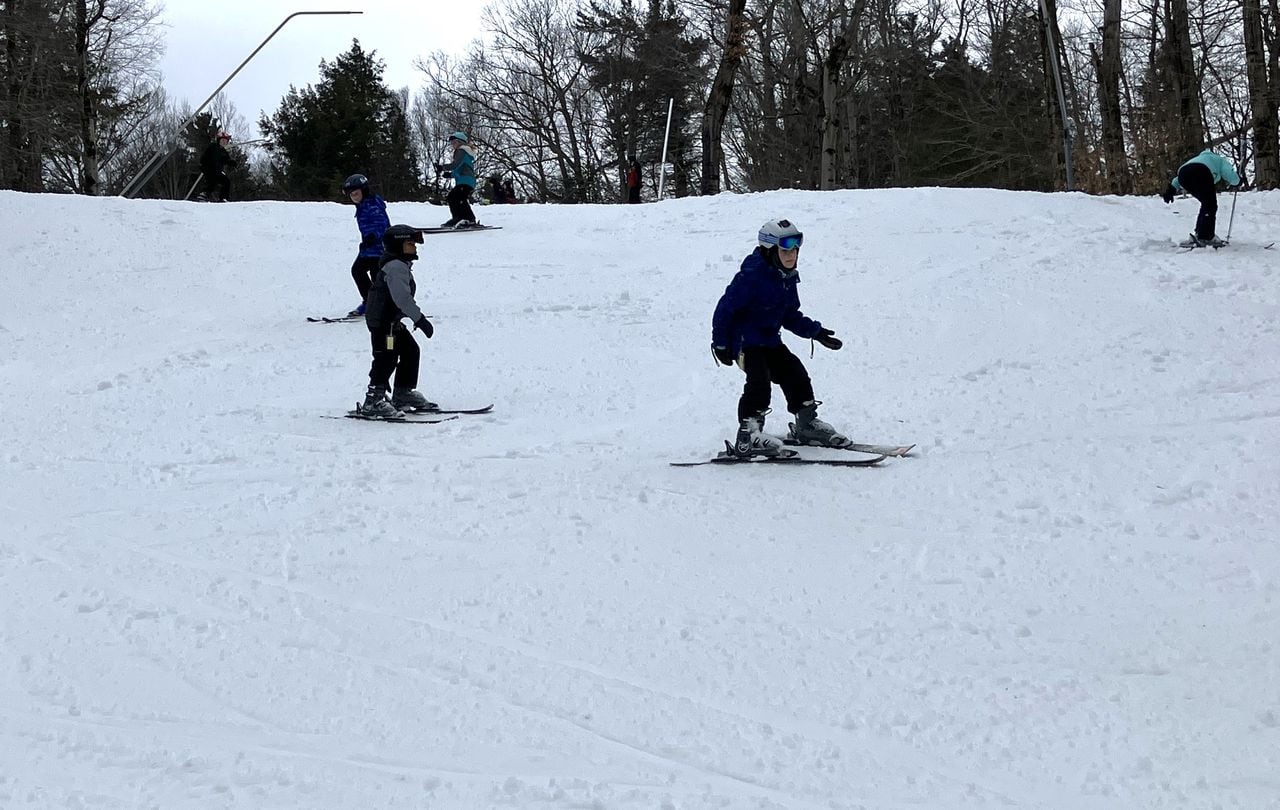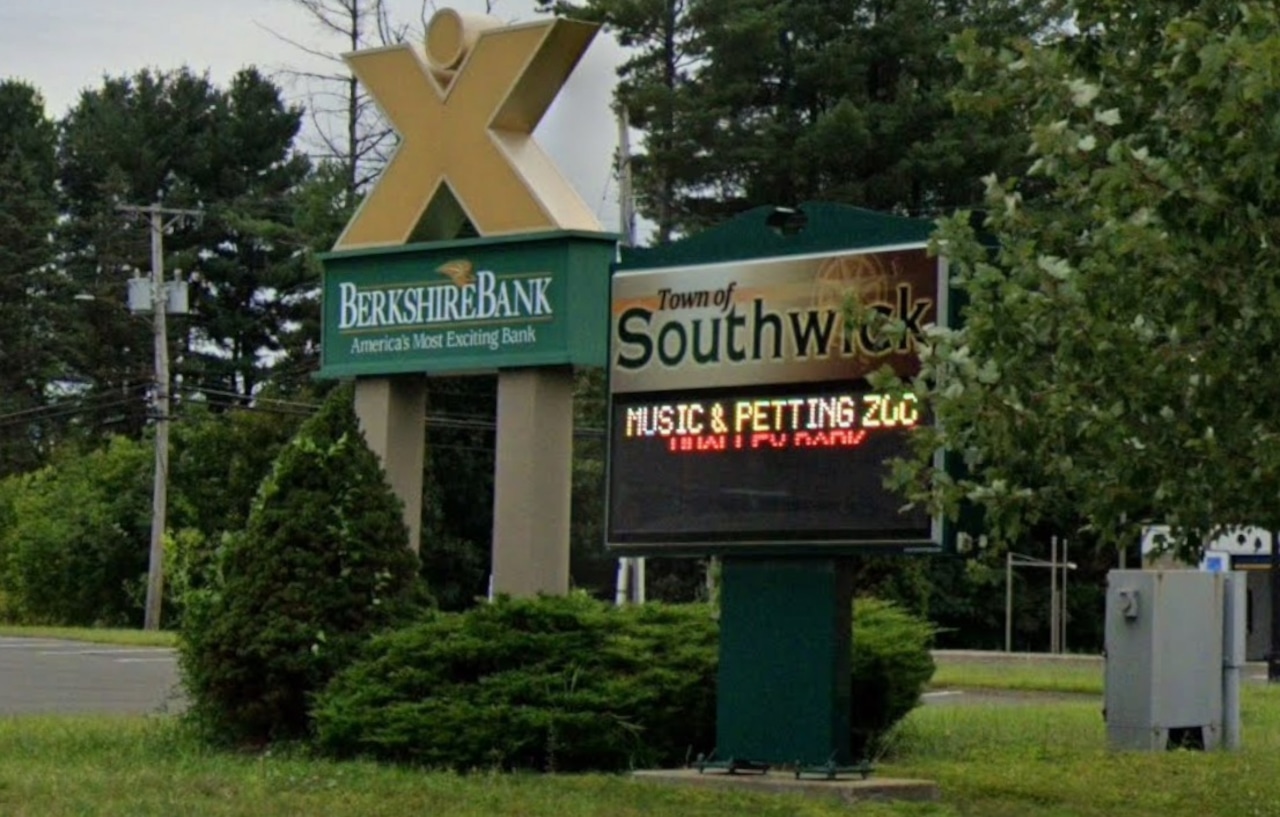Days before a holiday weekend, snow starts falling but then disaster strikes: Temperatures climb and snow turns to rain.
So what does a ski area do when one of the year’s largest crowds is expected to hit the slopes for a long holiday weekend — but the weather won’t cooperate?
“You have to roll with the punches,” said Steven Gabriel, marketing coordinator for Bromley Mountain, in Vermont. “Everything is done on a case-by-case basis. You never make the same decision twice after a storm.”
This week, New England ski areas were rejoicing after a Sunday storm dumped anywhere from 4 inches in northern Vermont and New Hampshire to more than a foot on the Berkshires. Then a Tuesday night storm started fine with plenty of snow in some regions, but then switched to rain.
Mount Snow in southern Vermont got about 6 inches of snow followed by at least an inch of rain. On Wednesday, snowmakers and groomers were still waiting for a return to cold temperatures before preparing slopes for one of the three biggest ski weekends of the year.
“It is really hard to do anything until it refreezes,” said Andrew Lampron, senior manager of snow surfaces for Mount Snow. “If you try to groom it, it just makes a mess and sticks to the snow cats.
Bromley, which is a little farther north, saw 8 to 9 inches in the Tuesday storm before rains came. Its mountain operations began their day early Wednesday by clearing slushy snow off lift cables, chairlifts and sidewalks for safety reasons and then started waiting for seasonal temperatures to return, Gabriel said.
Letting water drain
Grooming waterlogged snow just packs it down and turns it to ice. Instead, they let as much water drain out of it as possible before the temperatures turn cold so it is easier to groom.
“It is actually nice out there right now,” Gabriel said Wednesday after the storm. “The surface is nice and soft and skiers would have a great time out there if they are dressed properly.”
And yes, skiers and riders do pack down the snow, which the operations team was trying to avoid, but the number of people out on a Wednesday after a rainstorm is minimal, so they do little damage.
While Bromley rarely closes during the ski season, Massachusetts mountains Berkshire East and Catamount, which are owned by the Shaefer family, decided to take the day off and closed to let the snow dry.
“We anticipate it (the rain) will saturate the new snow cover but not eliminate it, as the new snow will absorb the rain and protect the existing base,” officials said on the Berkshire East website.
With temperatures dropping to the 20s on Wednesday night, Gabriel and Lampron said the groomers were going to be out in full force.
Even grooming, when faced with these conditions, is a little bit art and a little bit science, they said.
Groomers try to get the blades as far into the ice as possible. The ice is then chopped up with a rotating cutting edge with multiple teeth inside a box. The longer the snow stays in the box before released the better the product will stick to the surface and create that perfect corduroy quality that some skiers and riders crave, Lampron said.
“That granular product is good to ski for a short time, but the base is a brick of ice. It is not a surface that will last [after] a lot of skiers,” he said.
Thus, the snowmaking. A combination of grooming and snowmaking will make the best surface after rain turns the surface to ice, but the weather must cooperate, which it has not been doing either during the busy Christmas week or this weekend’s Dr. Martin Luther King Jr. holiday.
“We want to make snow every opportunity we have, but snowmaking isn’t a magical switch you can simply turn off and on when the temperatures hit 32 degrees,” said Kevin Harrington, head of mountain operations at Mount Snow. Effective snowmaking that lasts, he said, needs the right atmospheric conditions.
“We also need a series of days with these aligned atmospheric conditions to make impactful snow that’s going to stick and hold long enough to be pushed out to create the skiing/riding surface,” Harrington said.

Ski school classes practice at Otis Ridge, in Otis, on Thursday before the busy Rev. Martin Luther King Jr. holiday weekend. (Jeanette DeForge/Republican staff)Republican
Key ingredient: Cold
Mountains across New England constantly upgrade their snowmaking, adding the latest technology to increase energy efficiency and to make the most and best snow possible. Still nothing works without the cold.
The need a maximum “wet bulb temperature” of 28 degrees to make snow. If the humidity is high, the temperature needs to be lower. Ideally, snowmakers want temperatures below 20 degrees and low humidity for a sustained period, which allows them to make more snow faster with less energy. The colder the temperatures, the better the quality of snow as well, Lampron said.
For example, Mount Snow, which completed a more than $30 million snowmaking upgrade less than five years ago, can go from grass to a well-covered, skiable top-to-bottom trail in two to three days. But this week, it took it six days to do the same for its South Bowl trail because it was making snow in marginal temperatures, he said.
Even after the snow is made, snowmakers do not immediately groom and open a trail. Ideally the snow will sit for one to two days to cure before it is ready to be groomed and skied on. That can draw criticism from skiers and riders who see the new snow and don’t want to wait.
“Mount Snow’s snowmaking system is capable of taking 100 acres (that’s over 90 football fields) of terrain from bare ground to commercially skiable in a little more than one day’s time in ideal conditions,” Harrington said.
Ski resorts also need a long enough window when temperatures fall below 28 degrees to make it worthwhile to turn on the snowguns. It takes a crew of three people two to four hours to manually prepare and turn on each gun since the hoses must be drained every time they are turned off to prevent them from freezing. After the work is done it has to be reversed, Lampron said.
That means the mountain needs at least 24 hours with temperatures below 28 degrees to start blowing snow. If temperatures spike above 28 degrees, the guns have to be turned off immediately. Otherwise, they are essentially making ice.
Despite the rain, enough snow fell on Bromley in the past week to provide enough base on trails that are already open. They just needed to be groomed, Gabriel said.
Snowmakers at Bromley will now work to expand terrain. They expect to turn on guns on intermediate trails Plaza and Lord’s Prayer and on expert trails Pabst Peril and Pabst Panic. They have also been expanding the terrain park, Gabriel said.
There is a logic to deciding which trails to focus on first when grooming, resurfacing and making snow.
“We are a family mountain, so we work on the beginner area first,” he said.
After enough beginner trails are treated — so the newest skiers and riders can have fun instead of struggling to navigate ice — the next step is to address heavily traveled connector trails.
Typically, expert trails are the last to get some love, since a limited number of skiers and riders can use them. When enough beginner and intermediate trails are open, snowmakers move to at least one expert trail, Gabriel said, to ensure the mountain also those customers a challenge.






